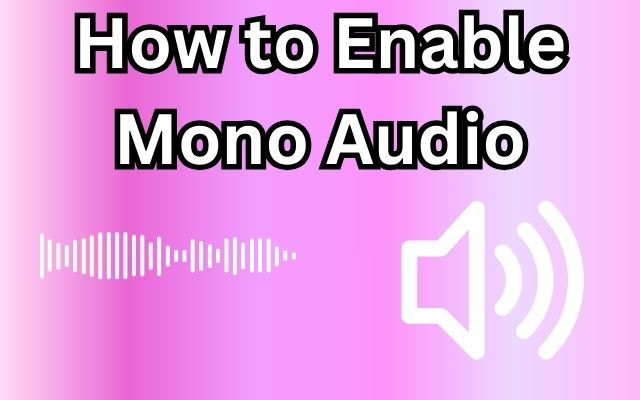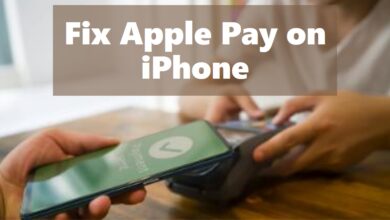Learn How to Enable Mono Audio on Mobile and Desktop

In the realm of audio settings on our devices, there’s a feature that often goes unnoticed but holds significant value for many users – the ability to Enable Mono Audio. This guide aims to shed light on this underutilized feature and provide a step-by-step process to enable it on various platforms.
Mono audio, as the name suggests, plays the same audio in both earbuds or speakers. This might seem counterintuitive in an era where stereo sound is the norm. However, mono audio is a crucial feature for individuals with hearing impairments or those who often use a single earbud.
Enabling mono audio ensures that these users don’t miss out on any part of the audio. It allows them to hear the complete audio from a single speaker, making it an inclusive feature that caters to the needs of all users.
In the following sections, we will delve into the specifics of how to enable mono audio on different devices, including mobiles and desktops. Whether you’re an Android user, an Apple aficionado, a Windows enthusiast, or a MacOS user, this guide has got you covered.
Stay tuned as we unravel the steps to enable mono audio, ensuring a comprehensive audio experience for all. Remember, sound is for everyone, and understanding our device’s audio settings is the first step towards a more inclusive world.
Understanding Audio Settings
In the world of audio, two terms often come up: Stereo and Mono. To fully grasp the process of enabling mono audio, it’s essential to understand these terms and their implications on our listening experience.
Stereo Sound is the standard audio setting for most devices. It delivers different audio signals to the left and right speakers or earbuds, creating a sense of depth and directionality. This is ideal for music or movies, where the spatial distribution of sound enhances the overall experience.
On the other hand, Mono Sound or monophonic sound refers to a single channel of audio. Regardless of the number of speakers or earbuds you use, the same audio signal is delivered to all. This might seem less immersive compared to stereo sound, but it has its unique advantages.
Mono audio is beneficial in several situations. For individuals with hearing impairments in one ear, mono audio ensures they can hear the complete audio from the other ear. It’s also useful when you’re using a single earbud, perhaps when jogging or cycling, to stay aware of your surroundings.
Moreover, in noisy environments or with poor speaker placement, mono audio can provide a more consistent sound. It ensures that you don’t miss out on any part of the audio because it was intended for the speaker you can’t hear well.
Now, we will guide you on how to enable mono audio on various devices. But before we dive into that, it’s important to note that switching between stereo and mono audio does not typically require additional software or hardware. These settings are built into your device’s operating system and can usually be changed with just a few taps or clicks.
Stay tuned as we delve into the step-by-step process of enabling mono audio on your mobile and desktop devices. Remember, understanding your device’s audio settings is the first step towards a more inclusive and comprehensive audio experience.
Now, we will start with how to enable mono audio on mobile devices, covering both Android and iOS platforms. So, whether you’re an Android user or an Apple aficionado, we’ve got you covered. Let’s dive in!
Enable Mono Audio on Mobile Devices
In this section, we will guide you through the process of enabling mono audio on your mobile devices. We will cover both Android and iOS platforms.
A. Android Devices
Android has made it quite straightforward to switch your device’s audio output from stereo to mono. Here’s how you can do it:
- Open the Settings app on your Android device.
- Scroll down and tap on Accessibility.
- Under the Audio & On-screen Text section, you will find the Mono Audio option.
- Toggle the switch to On to enable mono audio.
Now, your device will output mono audio, ensuring you don’t miss any part of the sound, even if you’re using just one earbud or have hearing impairment in one ear.
B. iOS Devices
Apple also provides an easy way to enable mono audio on its devices. Follow these steps:
- Open the Settings app on your iOS device.
- Tap on Accessibility.
- Under the Hearing section, tap on Audio/Visual.
- Toggle the Mono Audio switch to the On position.
Congratulations! You’ve just enabled mono audio on your iOS device. Now, whether you’re using one earbud or have a hearing impairment, you can ensure that you’re not missing out on any part of the audio.
Remember, these steps might slightly vary based on the version of the operating system on your device. If you can’t find the mono audio option, make sure your device’s software is up-to-date or try searching for “Mono Audio” in the settings search bar.
Now, we will guide you on how to enable mono audio on desktop platforms, including Windows and MacOS. So, whether you’re a Windows enthusiast or a MacOS user, stay tuned as we continue our journey towards a more inclusive audio experience. Let’s move forward!
- How to Save WhatsApp Audio on iPhone, Android, and Web
- How to Add Audio to PDF Online Free, without Acrobat?
- Audioenhancer.ai Review: Improve Sound Quality & Denoise With AI
- Top AI Audio Enhancers (2023)
Enable Mono Audio on Desktops
In this section, we will guide you through the process of enabling mono audio on your desktop devices. We will cover both Windows and MacOS platforms.
A. Windows
Windows has made it quite straightforward to switch your device’s audio output from stereo to mono. Here’s how you can do it:
- Right-click on the Sound icon in your system tray and select Sounds.
- In the Playback tab, find your audio device and click on Properties.
- Go to the Levels tab, and then click on the Balance button.
- Adjust the sliders for Left and Right to the same level to enable mono audio.
Now, your device will output mono audio, ensuring you don’t miss any part of the sound, even if you’re using just one speaker or have hearing impairment in one ear.
B. MacOS
Apple also provides an easy way to enable mono audio on its devices. Follow these steps:
- Open System Preferences and click on Accessibility.
- In the sidebar, click on Audio.
- Check the box for Play stereo audio as mono.
Congratulations! You’ve just enabled mono audio on your MacOS device. Now, whether you’re using one speaker or have a hearing impairment, you can ensure that you’re not missing out on any part of the audio.
Remember, these steps might slightly vary based on the version of the operating system on your device. If you can’t find the mono audio option, make sure your device’s software is up-to-date or try searching for “Mono Audio” in the system preferences search bar.
In the next section, we will guide you on how to troubleshoot common issues when enabling mono audio. So, stay tuned as we continue our journey towards a more inclusive audio experience. Let’s move forward!
Troubleshooting Common Issues
While enabling mono audio is generally a straightforward process, you might encounter some issues. Here are a few common problems and their solutions:
- Mono Audio Option Not Found: Ensure your device’s software is up-to-date. The mono audio feature is available on most modern operating systems.
- No Sound After Enabling Mono Audio: Check your device’s volume level and speaker/headphone connection. If the problem persists, try restarting your device.
Remember, understanding your device’s audio settings can enhance your listening experience and make it more inclusive.
FAQ
Q: How do I turn on Mono Audio on my computer?
A: The process varies depending on your operating system. On Windows, right-click the Sound icon in your system tray, select Sounds, go to the Playback tab, find your audio device and click Properties, go to the Levels tab, and adjust the sliders for Left and Right to the same level. On MacOS, open System Preferences, click on Accessibility, click on Audio in the sidebar, and check the box for Play stereo audio as mono.
Q: How do I turn on Mono Audio on my phone?
A: On Android, open the Settings app, scroll down and tap on Accessibility, and under the Audio & On-screen Text section, you will find the Mono Audio option. Toggle the switch to On. On iOS, open the Settings app, tap on Accessibility, under the Hearing section, tap on Audio/Visual, and toggle the Mono Audio switch to the On position.
Q: How do I switch to Mono Audio?
A: Switching to Mono Audio involves changing your audio settings on your device. The process is generally found within the Accessibility settings on both mobile devices and computers.
Q: Do phones play audio in mono?
A: By default, most phones play audio in stereo. However, they do have the option to switch to mono audio, usually found in the Accessibility settings.
Q: How do I get mono sound on my Android?
A: Open the Settings app on your Android device, scroll down and tap on Accessibility. Under the Audio & On-screen Text section, you will find the Mono Audio option. Toggle the switch to On to enable mono audio.
Q: Should I enable Mono audio?
A: Enabling Mono audio can be beneficial if you have hearing impairments or if you often use a single earbud. It ensures that you don’t miss out on any part of the audio because it plays the same audio in both speakers or earbuds.
Q: How do I resolve Mono audio?
A: If you’re having issues with Mono audio, ensure your device’s software is up-to-date. If you’re not getting any sound after enabling Mono audio, check your device’s volume level and speaker/headphone connection. If the problem persists, try restarting your device.
Q: What does turn on Mono audio mean?
A: Turning on Mono audio means changing your device’s audio output from stereo (different audio signals to the left and right speakers) to mono (the same audio signal to both speakers). This can be beneficial for individuals with hearing impairments or those who often use a single earbud.
Conclusion
We’ve journeyed through the world of audio settings, understanding the difference between stereo and mono audio, and learning how to enable mono audio on various platforms. Enabling mono audio is more than just a setting; it’s a step towards inclusivity, ensuring that everyone, regardless of their hearing capabilities, can have a complete audio experience.
Remember, the power to customize your audio experience lies within your device’s settings. So, go ahead, explore, and make the most out of your device’s capabilities. Here’s to a more inclusive and comprehensive audio experience for all! Thank you for staying with us throughout this guide.





